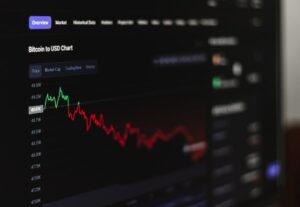How Margin Requirements Impact Your Forex Trading Strategy
Forex trading is a popular investment option for many individuals looking to make money in the financial markets. It offers the potential for high returns, liquidity, and the ability to trade on leverage. Leverage allows traders to control a larger position in the market with a smaller amount of capital. However, leverage is a double-edged sword, and traders need to understand how margin requirements impact their forex trading strategy.
Margin is the amount of money that a trader needs to have in their trading account in order to open and maintain positions. It acts as a form of collateral, ensuring that traders can cover any potential losses they may incur while trading. Margin requirements are set by the broker and are based on a percentage of the total value of the position. For example, a broker may require a 2% margin for a $100,000 position, which means the trader needs to have $2,000 in their account.
The impact of margin requirements on a trader’s forex trading strategy is significant. It determines how much leverage a trader can use, the size of the positions they can take, and the risk they are exposed to. Higher margin requirements mean lower leverage, smaller positions, and lower risk. Conversely, lower margin requirements mean higher leverage, larger positions, and higher risk.
One of the key considerations when trading forex is risk management. Margin requirements play a crucial role in managing risk. A trader needs to determine the appropriate level of leverage and position size based on their risk tolerance and trading strategy. It is important to strike a balance between maximizing potential returns and protecting capital.
Margin requirements also impact the availability of trading opportunities. Higher margin requirements limit the number of positions a trader can open simultaneously. It may force traders to prioritize their trades and focus on the most promising opportunities. On the other hand, lower margin requirements provide more flexibility and allow traders to take advantage of multiple trading opportunities concurrently.
Margin requirements also affect the margin call and stop-out levels. A margin call occurs when a trader’s account equity falls below a certain percentage of the required margin. It is a warning that the trader needs to deposit additional funds to maintain their positions. If the margin call is not met, the broker may close out the positions, resulting in a loss for the trader.
Stop-out levels are similar to margin calls, but they represent the point at which the broker automatically liquidates a trader’s positions to protect the trader and themselves. Stop-out levels are typically set at a higher percentage of the required margin than the margin call level. Traders need to be aware of these levels and ensure they have sufficient funds in their account to avoid being stopped out of their positions.
Margin requirements also impact the cost of trading. When trading on leverage, traders need to pay interest on the borrowed funds. The interest charged is based on the margin requirements set by the broker. Higher margin requirements result in lower borrowing costs, while lower margin requirements lead to higher borrowing costs.
Lastly, margin requirements can impact a trader’s psychology and emotions. Trading on high leverage can amplify both profits and losses, leading to heightened emotions and potentially irrational decision-making. Higher margin requirements can act as a safety net, forcing traders to be more cautious and disciplined in their trading approach.
In conclusion, margin requirements have a significant impact on a trader’s forex trading strategy. They determine the amount of leverage a trader can use, the size of the positions they can take, the risk they are exposed to, and the cost of trading. Traders need to carefully consider their risk tolerance, trading strategy, and available trading opportunities when determining the appropriate level of margin requirements. By understanding and managing margin requirements effectively, traders can enhance their chances of success in the forex market.






